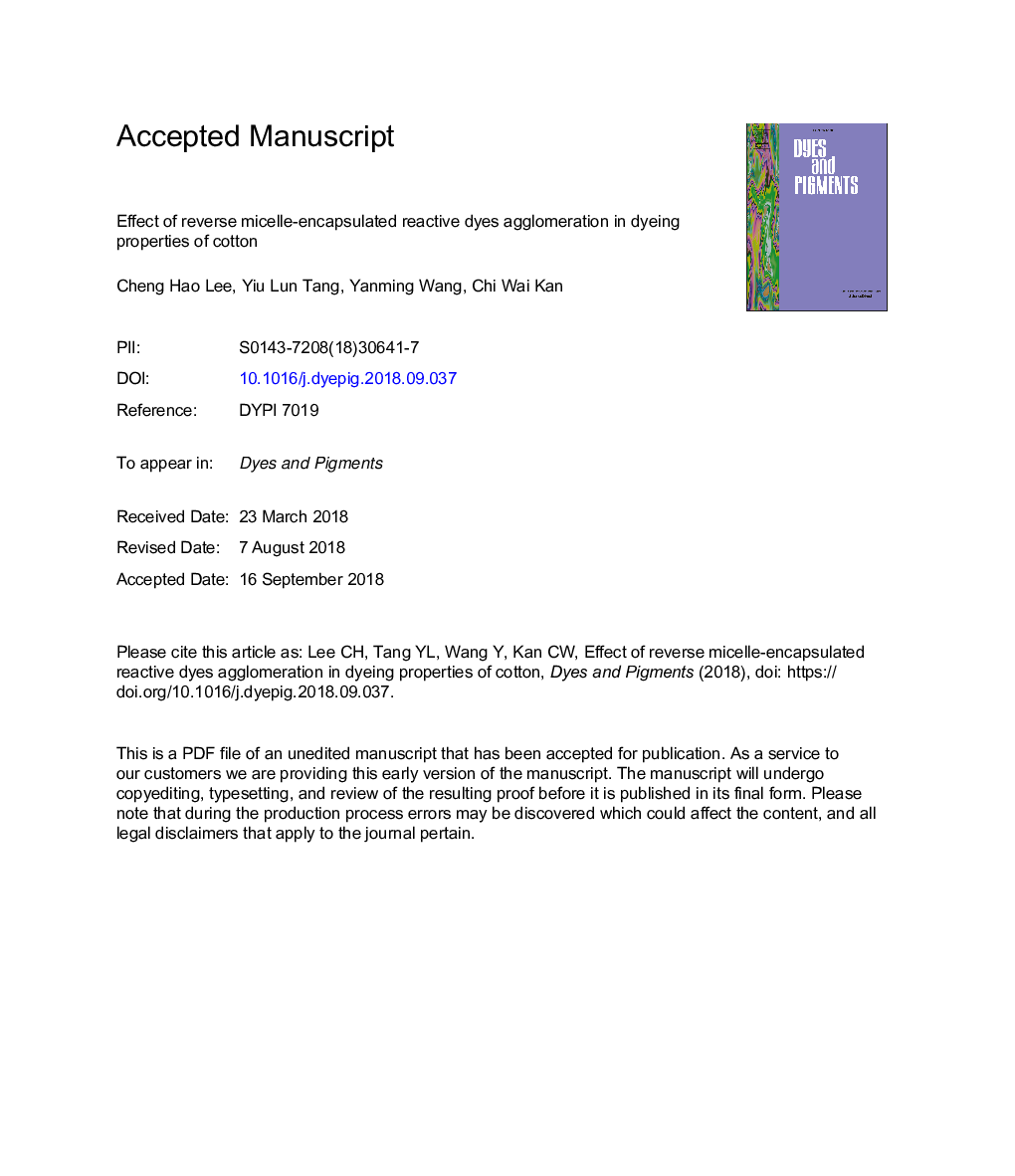| Article ID | Journal | Published Year | Pages | File Type |
|---|---|---|---|---|
| 10225156 | Dyes and Pigments | 2019 | 33 Pages |
Abstract
Reverse micelles using nonionic poly(ethyleneglycol) (PEG)-based surfactant as building block were introduced to encapsulate reactive dye for cotton dyeing. The morphological transition of reactive dyes from well-dispersive spherical form into highly agglomerated form via various surfactant-to-co-surfactant molar ratios and surfactant-to-water molar ratios have been preliminary investigated. The dyeing properties of cotton has been analyzed in terms of dispersion of reverse micelle structure from transmission electron microscopy, identification of chemical signatures of dye-cotton interaction from Raman spectroscopy, color strength and relative levelness. The reverse micellar structures under both highly dispersed and agglomerated forms are in good agreement with color strength and levelness data. The optimization of surfactant conditions can be considered as major parameters for investigating the quality of cotton dyeing including color strength and levelling conditions.
Related Topics
Physical Sciences and Engineering
Chemical Engineering
Chemical Engineering (General)
Authors
Cheng Hao Lee, Alan Yiu Lun Tang, Yanming Wang, Chi Wai Kan,
